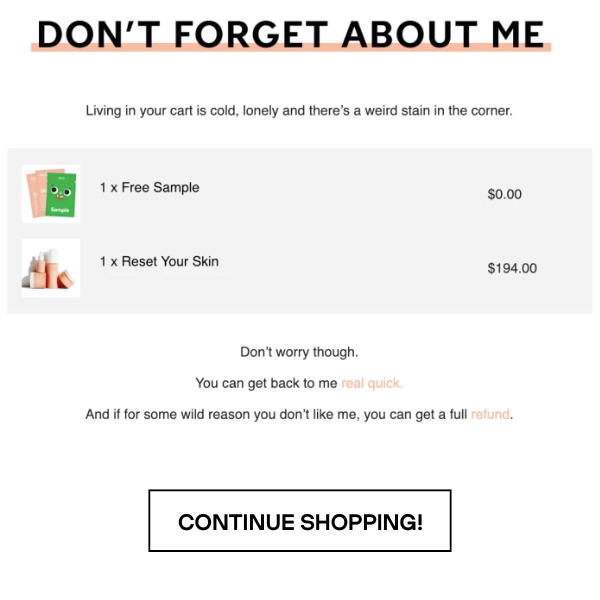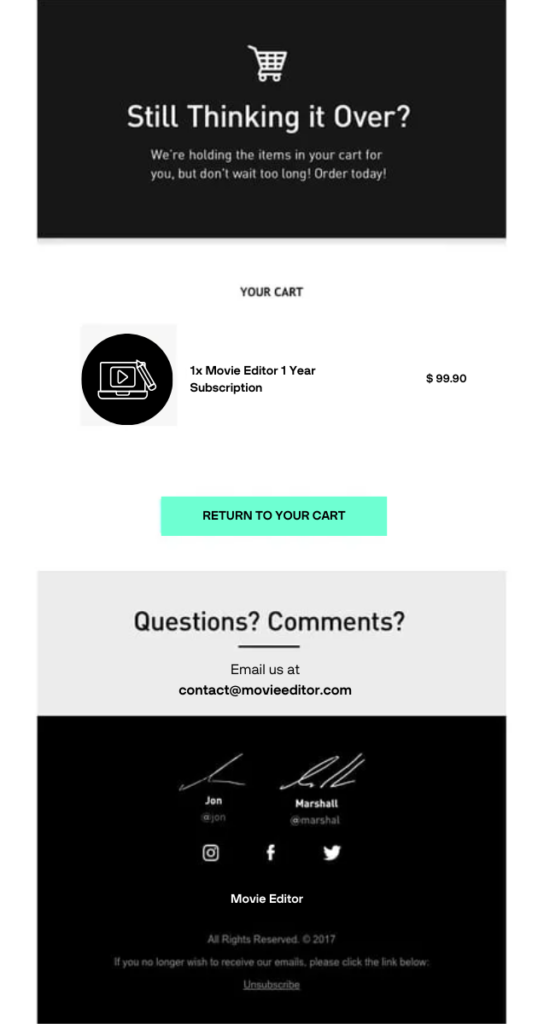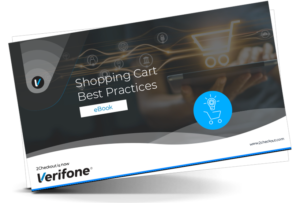Cart abandonment is a common challenge faced by e-commerce sites, with businesses having a 70% cart abandonment rate on average.
As concerning as this sounds, every abandoned cart is a chance to wow the prospective buyer with an effective cart abandonment email. Hence, by developing a strategy, you’re giving yourself a second chance to recoup the revenue and potentially gain loyal customers.
But what does an effective email entail? How can it reach an audience that previously disregarded their purchases? That’s exactly what we’re going to discuss today. In addition to tips for optimizing your abandoned cart email, we’ll dissect them in great detail and elaborate on every key element.
Understanding Why Customers Abandon Carts
Before you optimize your abandoned cart emails, you must go back to the drawing board and understand why customers abandon shopping carts in the first place. While every buyer might have their own specific reasons; most of the time, it’s down to:
- Unexpected costs: Additional charges, such as shipping fees, taxes, or handling costs, can surprise and deter customers from completing their purchases.
- Lengthy checkout process: A complicated or time-consuming checkout process can frustrate customers, leading them to abandon their carts.
- Distractions: Customers might get distracted during the checkout process, either by external factors or by navigating away from the site for various reasons.
Rarely will the reasons for cart abandonment be evident, which is why you’ll have to analyze user behavior in-depth. This involves using tools like Google Analytics or Hotjar to pinpoint what happened exactly—what was the click path, how long each session lasted, etc. But why go this deep? To determine the details of the customer personalization process, of course.
Because, in order to send the right cart abandonment email, you have to know why the cart was initially abandoned. For instance, if multiple customers abandon their carts upon seeing the page where the costs are listed, then anything other than a discount will fall on deaf ears.

Crafting Compelling Abandoned Cart Email Content
Now that you know what seems to be the cause of cart abandonment and have the necessary data, it’s time to devise an approach to resolve the issue. While timing and content variation do play a role, the success of your emails rests upon three pillars—the subject line, the body and the CTA.
Subject Line Strategies
Did you know that a whopping 47% of email users open their emails based on the subject line alone? To make things even worse, 69% see it as enough of a reason to report as spam.
The subject line is the first thing your customer sees, so you don’t have to have a PhD in psychology to realize you have one chance to capture their attention. After all, the average recipient’s attention span is only 8 seconds. So, how do you start?
Firstly, consider using lines like:
- Did you forget something special?
- Limited-time offer: Your cart awaits!
- Last chance to reclaim your cart!
- 24 hours to use your coupon for 30% off!
However, be careful about not overdoing it. No one likes to be patronized and nudged with excessive aggression. This means too many capital letters, exclamation marks and emojis will have a detrimental effect on the open rate, even if Gen Z is your target audience.
Personalization can also boost open rates. Try incorporating the customer’s name and the product name, such as:
- [Customer Name], your [Product Name] awaits!
- Hey, [Customer Name], willing to give [Product Name] another shot?
If you’re unsure about two or more options, implement an A/B testing plan and base your decision on your data. Remember, even the best email body is worthless if you ‘fumble’ the attention-catcher, the subject line.
Email Body Content
Most of the time, subject lines are the culprit of low open rates. Upon seeing improvements, a lack of changes in your reply rate might be a sign to change the body of the email.
First and foremost, the content should be friendly and conversational but still aligned with your customer profile. If your audience is mostly entrepreneurs and decision-makers, you’re dealing with people who are used to dabbling in wealth protection and offshore bank accounts. Hence, using slang and being pushy won’t cut it. Conversely, a Gen Z audience has no time for unnecessary formalities or long diatribes.
Whatever your audience may be, avoid sounding too sales-aggressive. Sure, the customer knows you’re eager to get them back onboard, but sounding too desperate can ruin your brand image and eradicate any chance of attracting, let alone retaining customers.
Aside from the words themselves, make sure you include visual reminders of the abandoned items—high-quality images with clear calls to action (CTAs). This lets you:
- Highlight the benefits of the products left behind, addressing potential concerns and showcasing value at the same time
- Have an excuse to add social proof elements like customer testimonials, reviews, or influencer mentions in order to increase trust and urgency
- Offer incentives such as discounts, free shipping, or loyalty points
Call to Action (CTA)
Speaking of which, your call to action is where you guide your customer to complete their purchase. CTAs need to be clear and concise, and this is non-negotiable.
Usually, phrases like “Complete your purchase” or “Checkout now” work well. They should be no longer than 5-6 words, in the imperative voice and have absolute clarity.
In addition, the placement of your CTA is critical—it should be prominently displayed and easy to click. Consider A/B testing different CTA wording and placements to see what resonates best with your audience. Remember, the goal is to make it as easy and appealing as possible for customers to finish their transactions, be it local or cross-border ones.
The example below emphasizes what a good cart abandonment e-mail should look like. It is branded, has a great subject line, elements and details are clear and balanced displayed, the whole e-mail has a minimalist design, includes a CTA button, and is also a perfect example for the digital goods industry.

Source: Ortto
Additional Tips for Optimization
So, you’ve updated all three pillars of your cart abandonment email and the results still aren’t satisfactory? It might be a cause of concern, pointing to deeper issues with your site or email domain deliverability, but oftentimes, the root might be one of the other aspects of your retargeting strategy.
Mobile-Friendly Design
Before you overhaul your entire checkout process, ensure your emails display properly across all devices, as 55% of email users prefer to receive emails from businesses on their smartphones.
Therefore, a mobile-friendly design is crucial. This includes using responsive design techniques, ensuring text is readable without zooming in, and making buttons and links easy to tap. To accomplish this, you can use the 2checkout email editor, or software like Litmus, Email on Acid and PreviewMyEmail.
Email Timing
Timing can make a big difference in the success of your cart abandonment emails. Sending emails too soon might annoy customers, while waiting too long could reduce effectiveness. However, sequences are a must. According to Klaviyo, sending 3 emails can be 8x as effective as sending only one.
Furthermore, a survey by Woodpecker indicates that longer follow-up sequences have a 27% higher rate. Thus, you shouldn’t only have multiple versions of cart abandonment emails, but also multiple follow-ups and the means to track their effectiveness, as well.
Audience Segmentation
On a larger scale, 80% of all marketing ROI (this includes retargeting) rests upon the shoulders of segmented campaigns, while companies that segment their customers are 60% more likely to understand them. tailor your emails to specific customer groups by segmenting your audience.
For example, repeat customers might respond better to loyalty points, while new customers might appreciate a discount. Likewise, the tone of your retargeting emails will probably vary depending on the exact cause of abandonment.
No matter the success of your last optimizations, you should rely on simple hunches or consider your current datasets infallible. Instead, base your decisions on past behavior to personalize your cart abandonment emails, and they’ll inevitably be relevant and effective after sufficient personalization.
Tracking and Analyzing Results
Monitor key metrics like open rates, click-through rates, and conversion rates to evaluate the performance of your cart abandonment emails. Make sure you properly make use of data annotation, so that all data points are clearly marked and findable.
Then, you can draw conclusions and utilize this data to adjust your strategies. For instance, if a particular subject line consistently performs well, incorporate similar phrasing in future emails. A/B testing different elements of your emails, such as subject lines, images, and CTAs, can also provide valuable insights.
Your customers are “still thinking it over”, regardless of the products you offer, making it crucial to seize the moment. The mobile-friendly design showcased below exemplifies what a SaaS abandonment cart follow-up email should entail. The considerate approach of the subject line provides reassurance to the potential buyer, while simultaneously encouraging action through the CTA, and clear display of product and pricing information. Additionally, including contact information and details at the end enhances credibility and fosters trust, helping customers make informed purchasing decisions.

Source: HubSpot
Bonus Tip: How Not To
Everyone seeks the ideal recipe for crafting that effective follow-up email for an abandoned cart. However, until you achieve that perfect conversion-optimized content, ensure your email avoids looking like this example.

Source: Sendgrid
Such an email is likely to be flagged as spam or junk. It lacks essential elements of a successful follow-up email, including clear branding, an engaging subject line, a compelling CTA, and key details about the cart. An email resembling a notepad is unprofessional and could jeopardize your relationship with valuable customers, especially when they are on the verge of converting.
Don’t overlook this critical aspect of your marketing strategy—revise your abandoned cart follow-up emails today!
Conclusion
With eCommerce giants casting their eye on innovations like crypto, artificial intelligence and wide-scale automation, re-targeting abandoned carts will only become more difficult.
And amongst this fanfare, optimized cart abandonment emails will remain a powerful tool for recovering lost sales and boosting customer engagement. However, to make use of this tool, you must understand why customers abandon carts, know how to create compelling email content and be ready to implement additional optimization strategies.
Ultimately, the subject line will make or break your open rate, the reply rate rests upon the email body, while the CTA will determine whether the customer will be ready to resume their shopping cart experience and, hopefully, become a regular.
Learn more about the best practices to maximize your conversion rates and revenue by downloading this FREE ‘Shopping Cart Best Practices for Software and SaaS Sales‘ eBook.






